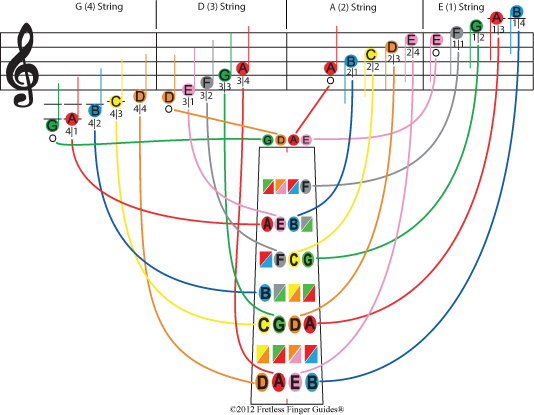Welcome to our forum. A Message To Our New and Prospective Members . Check out our Forum Rules. Lets keep this forum an enjoyable place to visit.
Currently working on errors from the latest (SimplePress) forum update. Many issues have been resoled and others are being worked on. Thank you for your patience.
 Topic RSS
Topic RSS



 (3 votes)
(3 votes) Member
 Offline
OfflineRegulars
 Offline
Offline
The G string is the lowest pitched string on the violin. An open G is the lowest pitched note you can play. The A shown on the G string is an octave lower than the A shown on the D string or open A string, and two octaves lower than the A shown on the E string. Try playing the different G notes one after the other to hear the difference.
Welcome to the forum and happy learning!
Member
 Offline
OfflineRegulars
 Offline
Offline
The low G can only be played open - any fingering on the G string brings it to a higher pitch than the low G. The notes shown in the diagram on the G string except the D are lower than all of the notes on the D string.
You have a choice of playing a fingered D on the G string or an open D on the D string. If you are using vibrato, you must do the fingered note, as you can't do vibrato on an open string.
Similarly, all of the notes shown on the D string except the A are lower than the notes on the A string, and the same goes for the E string versus the A string.
I hope this helps. If not, maybe someone more experienced can give a better explanation.
Regulars
 Offline
Offline
Playing the open G string, playing G on the D string, and play G on the E string give you three different notes that go by the same name.
When there is a chance of confusion, those three notes may be called G3, G4, and G5. They are different kinds of G notes.
Those three notes sound different, but they also sound somehow the same.
That is because they are octaves of each other.
The pitch of G4 is twice the pitch of G3, and the pitch of G5 is twice the pitch of G4.
1 Guest(s)


 Log In
Log In Register
Register


























